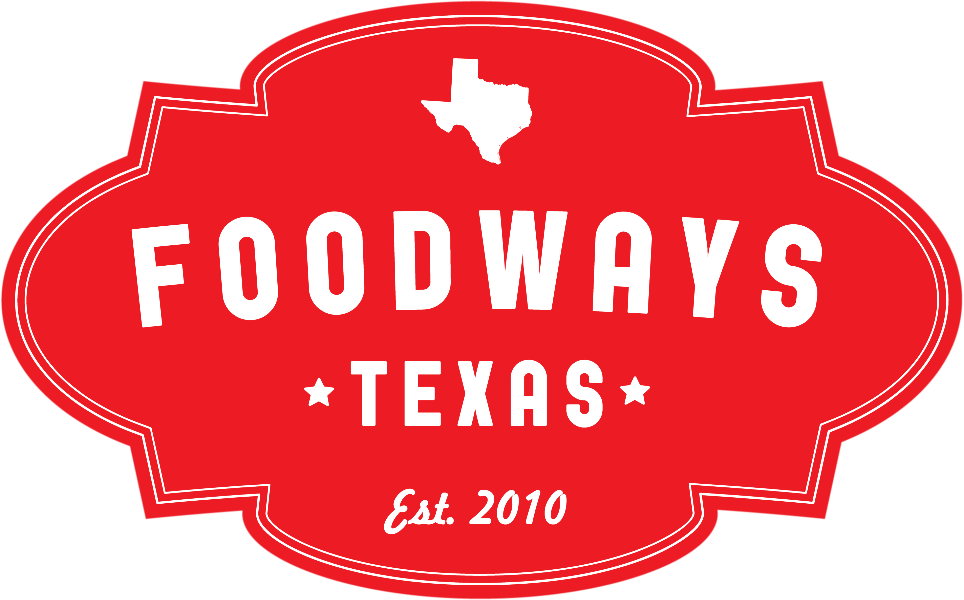Interviewer: Andrew Busch and Lisa Powell
Location: House Park Bar-B-Que – Austin, TX
This interview was originally produced through a collaborative effort of the American Studies Department at the University of Texas at Austin, The Central Texas Barbecue Association, and The Southern Foodways Alliance.
Fieldwork coordinator: Dr. Elizabeth Engelhardt; Project consultant: Amy Evans
It is shared with Foodways Texas as part of a collaboration with the Southern Foodways Alliance to document food stories in Texas.
As a child, Joe Sullivan ate at House Park Bar-B-Que and thought to himself that someday he wanted to own this restaurant or one just like it. In 1981, he fulfilled his childhood ambition by purchasing House Park, which sits near the Austin neighborhood of Clarksville where he was born and much of his family still lives.
Sullivan cooks all of the restaurant’s meat himself, on the brick pit, which has been in place since 1943. Those wishing to try their first taste of House Park barbecue need to keep in mind that the doors are open only between 11am and 2:30pm Monday through Friday.
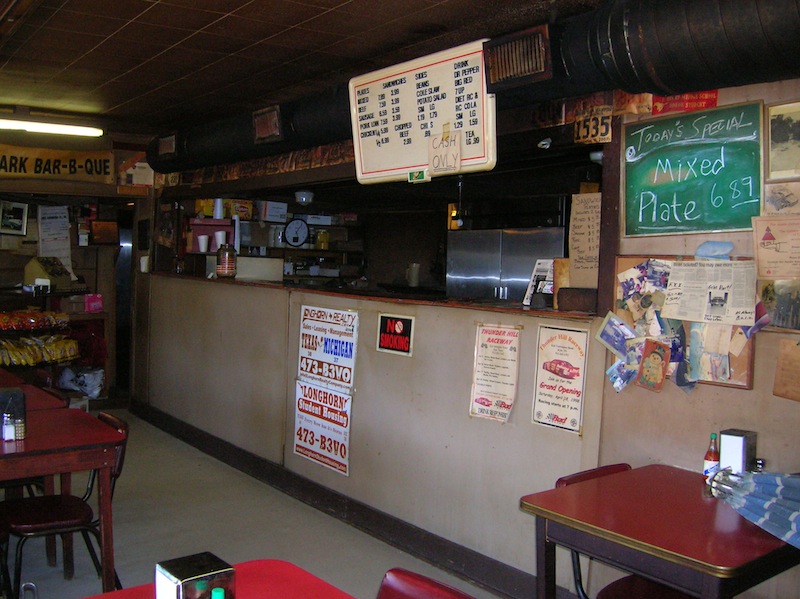
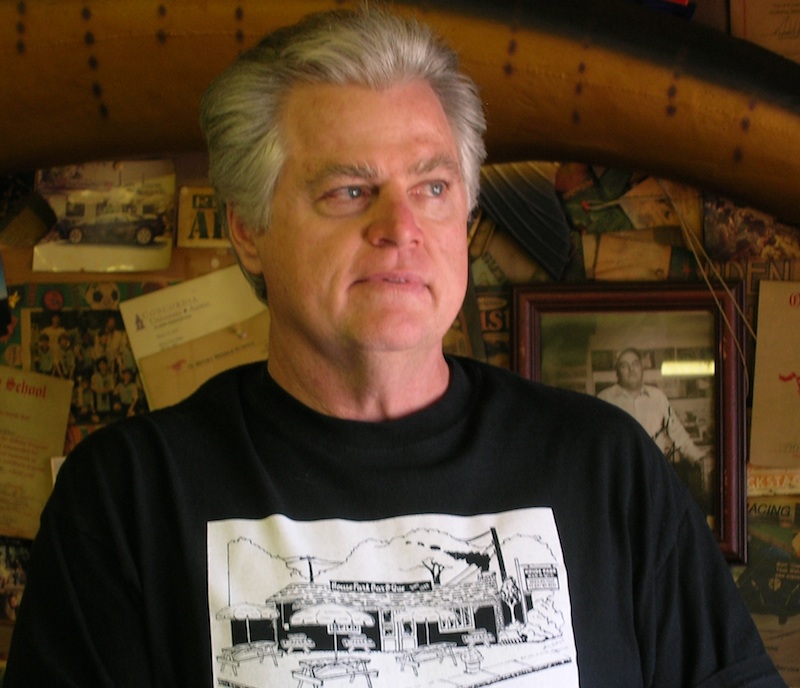
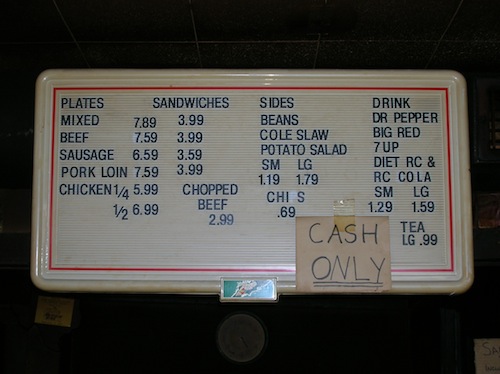
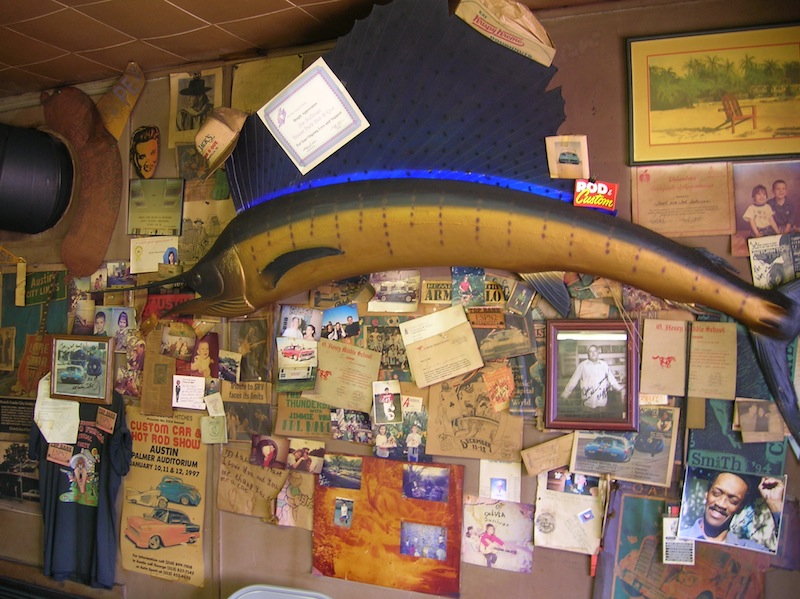
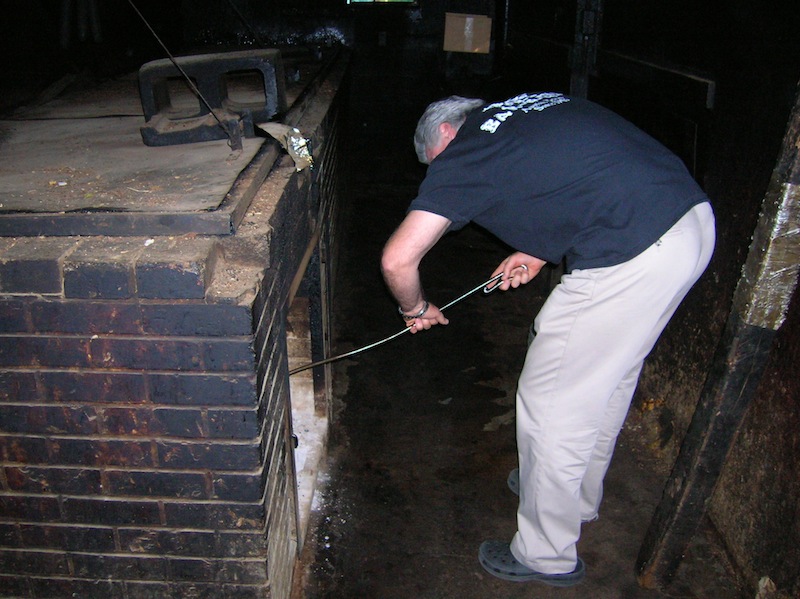
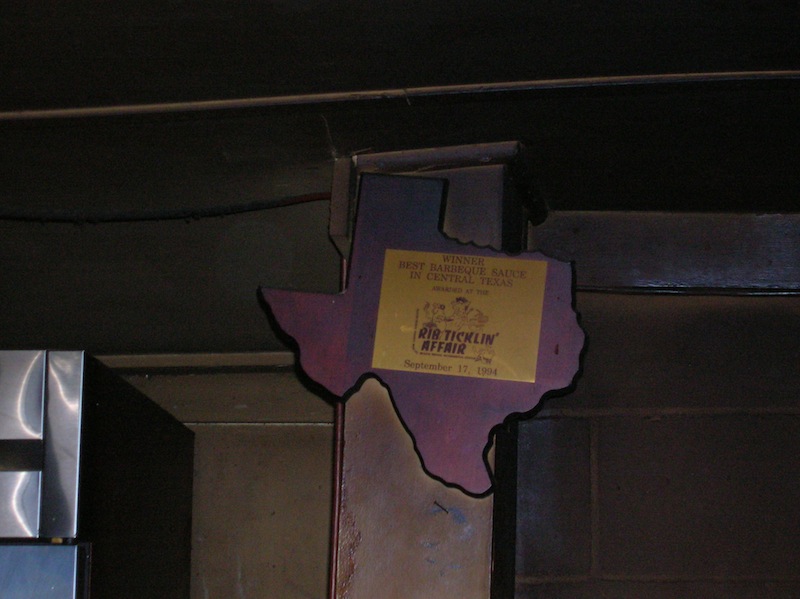

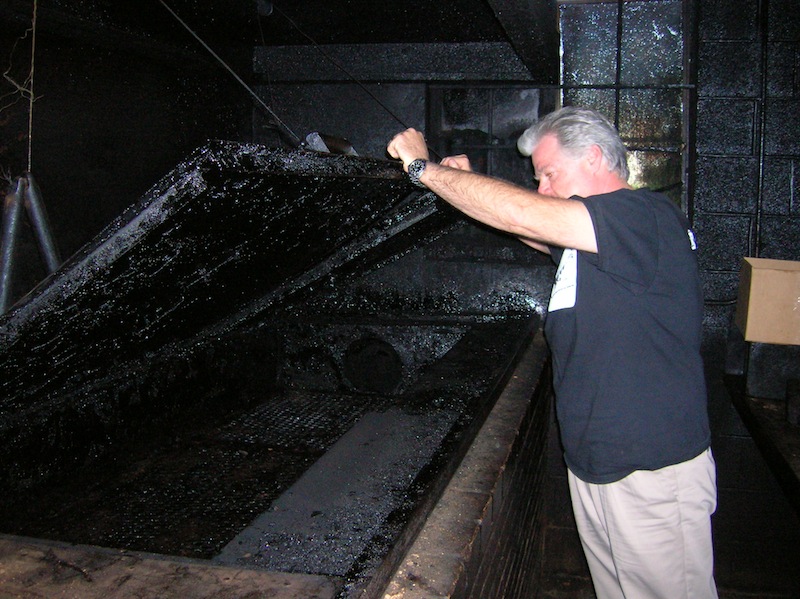
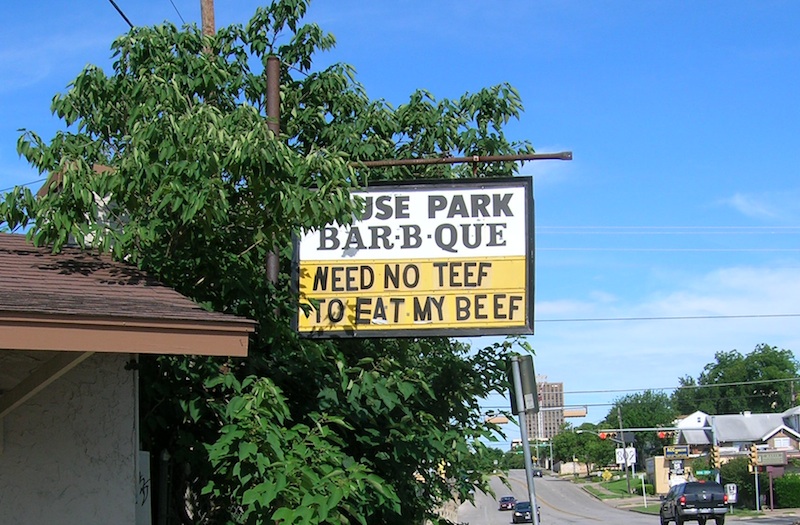
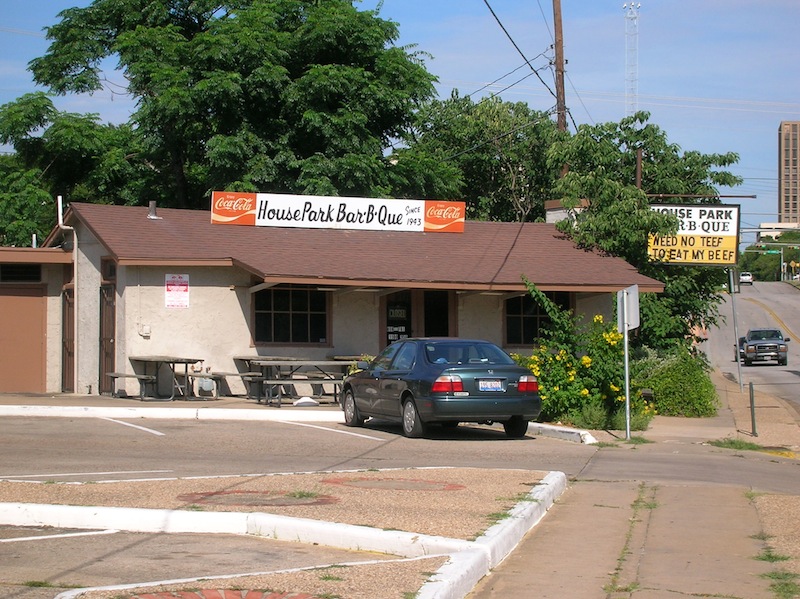
Lisa Powell: Great, thank you. So, first question, could you tell us how you got started in the barbecue business, running House Park?
Well, I ate here a few times as a kid, but not—not many times, because we didn’t have much money. But I always liked this place; I thought it had a little magic. And when I went to work for a chip company [Morton’s Potato Chips], they put me with a guy my first day training, and this was the first stop we went to. We came through the back door and I smelled that smell again, and I knew that some day I’d—I’d have this place or another one. And sure enough.
—
And on the sign it says that House Park Bar-B-Que has been here since 1943, so was there—do you know some of the earlier history of the place?
Well, I’ve been told by people that used to come here that it was a restaurant that sold—it was old German people had it—and it sold goulash and soups and stews and also ice. This was a good place to buy a five-cent bag of ice. They said it must have weighed forty pounds, but it was a nickel. And the guys that opened the Hoffbrau down here on Sixth Street said they used to buy ice up here for a nickel a bag. And sometimes they’d eat a bowl of—of stew or some goulash. But in 1943, it changed hands, and it opened as House Park Bar-B-Que since ’43, and it’s been that way ever since. The—the pit that’s in that back room there is the same pit that they’ve been using since 1943. And I’ve been using it for twenty-six years, and it’s—it works really good. It’s seasoned real good; it cooks like a champ. You might say it does all the work, and I get all the credit, and that’s fine with me.
So what does it mean that the—the pit is seasoned well?
Well, it—it builds up that magic I’m talking about, that smell. You can go back there, if we’re closed for Christmas holiday for two weeks, you walk back there, you still smell it. We don’t put anything in that pit but wood. We use oak wood, and we use a little bit of dry mesquite, but it’s got to be cut and dried for about a year before I’ll burn it. And that combination—that smell is just—you could put anything on there, and it will cook and taste wonderful, without any extra. I don’t season the meat at all. I don’t put salt, no pepper, no spices, no rubs, no nothing. And I don’t know many people that do it that way, but we do, and it works pretty good.
—
And so what is the pit made out of?
It’s a big, brick pit. They use firebrick. It’s about eighteen feet long and four-and-a-half feet wide, and we put the fire at the very front in the firebox, at the—at the start of the pit. And it takes up about three feet, so the next fifteen we can put our meat on. So, we cook about 180 pounds a night, but we don’t cook every night. We cook three nights a week, unless we have a party or something. But it’s just a big brick—and it has those metal doors that have the counter weights to help you lift them up, you know. And the smoke has to travel all the way from the front to the fire, all the way out the back, and then out the smokestack, so it really covers that meat up and cooks it real good.
—
Did anyone teach you how to barbecue, or did you just kind of learn on your own?
Well, I could go way back to when I was about eleven or twelve, and I—I remember cooking some pork chops on a pit at the house. They would sizzle, and I’d flip them, then they would sizzle, and I’d flip them. I mean sizzle on the top, so I’d flip them. And I finally thought they were done enough, so I brought them in the house, on a big old platter. And my dad was eating them with some potatoes and green beans and corn bread, and he was just humming, “Mmmm, mmm. These are good, good ribs, pork, good pork.” And I thought, “Man, he must have got a special cut, because mine taste like charcoal.” And it was burned up, but he told me to keep cooking, keep trying, and just keep it up, and I did. And finally learned that you’re not supposed to hear barbecue cooking. If it—if you can hear it, it’s—it is way too hot, and it’s going to burn. It’s burned already. So—and it’s not fast, it’s slow. Barbecue is a good food—slow.
—
So, do you have many regulars, who come in here every day or multiple times a week?
Most of our customers are regulars. The—the rare customers, which is probably about a third of our customers, have just started coming here. But we’ve got people that—I call them regulars because they ate here thirty years ago, and they don’t live around here, but whenever they’re in town, they always come down here and eat. Or they worked by here, and they had to move away. They’ll send me a letter sometimes that says “I was—ate at your place every day for twenty years, and now I’m out on North Mopac [US Highway 1, north of Austin], and I miss your barbecue place more than anything about moving.” So that’s—it’s nice to see that kind of stuff. But most of our customers are regulars, with the, you know—with a few of the new folks, and then, uh, the people that are becoming regulars.
—
When we stopped by to see you a few days ago, um, you had mentioned a—a little story about a certain list of top barbecue restaurants in Texas, and why you had sort of—usually were on the honorable mention for that list instead of in the top ten or so. Would you mind sharing that story with us?
I’ll be glad to. Joe Nick—Joe Nick Patoski from the Texas Monthly is a great guy; however, he always leaves me off of his Ten Best list. So I called him. Well, I called the radio station he was talking on one day, and they asked me if I would just like to speak to him. And I said, “Yes, love to.” So, I asked him why, and he—first he made sure it was me, somehow—oh, he asked me a question, a trivia question, and I answered it correctly. So, I asked him why I’m never in the Ten Best—I get a footnote on the next page as an Honorable Mention—and he explained it this way. He said, “Your restaurant is only open Monday through Friday from eleven to two thirty. You’re not open at night. You’re not open on weekends. You don’t sell beer. You don’t take credit cards.” He said, “I couldn’t put you in my Top Ten because our subscribers or our readers might pack up their car to go to your restaurant some Saturday evening, or even daytime, and they might drive a hundred miles, because people do that, and get there, and you’d be locked up.” He said, “And they wouldn’t think bad things about you; they would think bad things about Texas Monthly—that we’re no good, we should have, you know, made it—we shouldn’t have put you in there. So, until you open more hours and more days, you’re going to have to be a footnote in our publication, because that is the rules.” He said, “You don’t qualify for the Top Ten list because of your hours.” So I, I can agree with that..
—
All right, so you said you don’t serve beer here, but what beverages do you have to go along with the barbecue?
Well, you got to have Big Red. And you really need to have like a clear—like a 7UP for the kids. And we have the soda fountain you know: RC, Diet Rite Cola, Big Red, Dr. Pepper, and 7UP. And we make a fresh brewed iced tea every morning. That’s a big hit.
And what is special about Big Red? It was kind of on the top of your list there.
Well people associate barbecue with beer and Big Red. If you’re open in the evening and on the weekends, forget the Big Red. They associate it with beer. Since we’re open during the week, they think, “I want a barbecue sandwich and a Big Red.” We sell a lot of Big Red. It’s just got a good taste, you know, to wash it all down.
It’s a very Texan drink.
Yeah, it’s a Texan drink all right. The kids, they’ll drink too much of it because it has a lot of caffeine in it. They’ll drink it and go out and go crazy. But people, a lot of folks you know, they say, “Can’t have barbecue without Big Red.” You know, Robert Earl Keen, he dedicated his show at the Backyard [an Austin music venue] to us in the mid-nineties. And he has a song right before—no, he didn’t dedicate a show; he dedicated a song. He has a song called “Barbecue.” And he said, “This is dedicated to Joe and the good old boys down at House Park Barbecue.” Then he went on into the song. He sings a verse that talks about a plate of barbecue and a cold Big Red.
—
And I see that you have a daily special board. How do you decide what today’s special is?
You know, I don’t know how we came by that, but we’ve been using the same special. Monday’s the same thing, every Monday for as long as I can remember, at least twenty years. But Friday we always put a mixed plate. People tend to take longer lunches on Friday. They get together with, with other people, they’ll be bigger groups of people on Friday, and they’ll spend a little more money. We try to make it easy on them, by making our most popular plate a little cheaper on Friday. They seem to like it, too, because they really come in here and eat it up.
